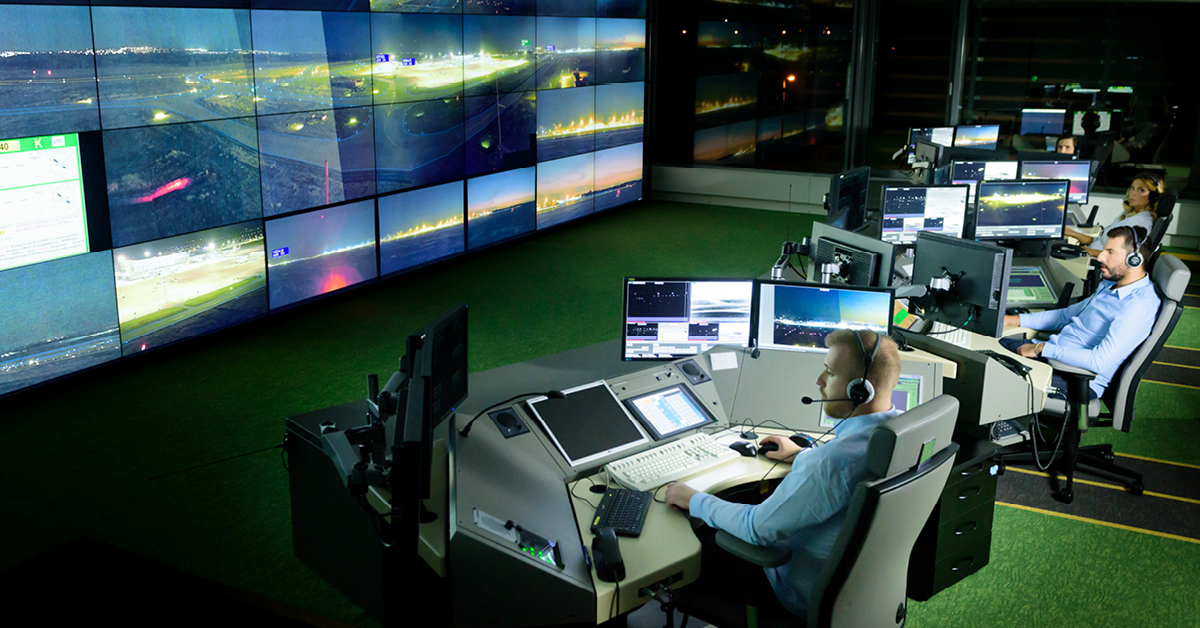Working towards resilience in the new normal

Kevin Shum, Director-General, Civil Aviation Authority of Singapore (CAAS) and Chair, CANSO Asia Pacific, shares his thoughts on how the region can build back better to ensure more inclusive, flexible and resilient air traffic management.
The aviation industry has taken a severe battering from the COVID-19 pandemic. The International Air Transport Association (IATA) has described 2020 as the worst year in history for air travel demand. Compared with the other regions, Asia Pacific was the hardest hit. Traffic plummeted 80.3% in 2020 compared with 2019. Though IATA has forecasted an improved situation in 2021 with demand going back to 50.6% of 2019 levels, the situation remains precarious as the disease continues to mutate and wreak havoc on existing planning parameters.
During this period, air navigation service providers (ANSPs) continued to keep air traffic management (ATM) systems functioning to support cargo, repatriation, humanitarian and limited scheduled flights. Though ANSPs have adjusted their operations to cater to the low traffic volumes, there is a need to remain nimble and ready to support the uptick in traffic when the time comes.
Leveraging the fundamentals
The CANSO Asia Pacific Operations and Safety Workgroups, which were formed in 2012 under the ambit of the Asia Pacific CANSO CEO Committee (APC3), have an established platform to exchange best practices and encourage collaboration in cross-border projects.
As travel had been curtailed this period, the workgroups gamely took to conducting their meetings virtually and this led to an unprecedented increase in the number of participants.
The pandemic brought about a drastic shift in focus and forced ANSPs to rethink their current and future plans. At the meetings, ANSPs like Airport & Aviation Services (Sri Lanka) Limited, Aeronautical Radio of Thailand Limited (AEROTHAI), AirNav Indonesia, Airservices Australia, Civil Aviation Authority of Singapore (CAAS), Federal Aviation Administration (FAA), and Maldives Airports Company Limited (MACL) came forward to share their COVID-19 related ATM initiatives to mitigate the spread of the virus at ATM facilities; ensure operational business continuity; and maintain staff competencies and skills.
The sharing sessions were knowledge levelers because all ANSPs were facing the same challenges and they were able to reference the experience of others to adjust to their own situation. The publication of two CANSO guidance documents on COVID-19: Ensuring Continuity of ATS Service Globally and COVID-19: ANS Restart and Recovery Guide were useful to support ANSPs in crystallising their plan of action.
Asia Pacific ANSPs also took guidance from the International Civil Aviation Organization (ICAO), which through the facilitation of the ICAO Asia Pacific Regional Office, organised video teleconferences to share and deliver information relevant to ANSP operations during the pandemic. The resources shared provided a strategy to assist States and ANSPs to assess, plan and manage their resources when traffic starts to pick up.
The Distributed Multi-Nodal Air Traffic Flow Management (ATFM) Network initiative, which started in 2014, was renamed as the Asia Pacific Cross-Border Multi-Nodal ATFM Collaboration (AMNAC). AMNAC’s community of 11 Asia-Pacific ANSPs and 38 airports leveraged their existing network to share their ATM and ATFM outlook via frequent web conferences and ATFM Daily Plans to help build a regional outlook during the COVID-19 pandemic.
The reliance on an uninterrupted and reliable flow of information to support the network has also enabled AMNAC to contribute to the development of a digital information exchange model to support the system-wide information management (SWIM) based ATFM and airport-collaborative decision making (A-CDM) data exchanges. I encourage more ANSPs and airports to join the AMNAC community to collaboratively work toward building a better and more resilient regional ATFM network.
Seizing opportunities
It was heartening that ANSPs went above and beyond managing the immediate impact of the pandemic, to looking ahead to trial ATM initiatives for future deployment when traffic recovers. In this regard, the ANSPs in the Asia Pacific region answered IATA’s request for ANSPs to implement more streamlined and flexible ATM procedures during the COVID-19 crisis. The intent is to facilitate flights that would result in environmental and economic benefits through the reduction of fuel burn, emissions, noise and fuel costs.
AEROTHAI continues to work towards a Flight & Flow Information for a Collaborative Environment (FF-ICE) technical trial with CAAS in the later part of 2021. This would enable information sharing and distribution across a broad range of stakeholders before and during a flight to bring about a common operational understanding.
CAAS worked with Singapore Airlines through the arrival sequencing in Singapore Terminal Maneuvering Area (TMA) initiative known as ASIST, primarily to regulate long haul arrivals. This included the development of a web-portal in June 2020 that allows airlines to populate flight information and receive optimised flight trajectory information, simulating an FF-ICE environment.
AirNav Indonesia deployed User Preferred Route trials to allow airlines to plan and use the routes that were most efficient for them. The trials were successfully implemented from June to August 2020 and considered factors like hazard and risk mitigation.
Evergreen initiatives like performance-based navigation (PBN) harmonisation, ATS Inter-facility Data-link Communications (AIDC) implementation and Automatic Dependent Surveillance-Broadcast (ADS-B) collaboration were not neglected and we continue to see progress between ANSPs in the region, regardless of whether they are CANSO members or not.
The future of ATM
This pandemic has brought our industry to its knees. It is no longer sustainable to operate under the same parameters. Resources will be increasingly harder to come by, but traffic will eventually recover and we need to ensure that we put in place a more flexible and future proof system.
I foresee that we would need to be more agile, open and fast to respond better to our customers and more unexpected events. This means that we need to invest in the digitisation of our workforce and workplace. Our colleagues need to be trained to be data smart and learn how to work with tools that have algorithmic processes.
ATM service provision could even be decoupled from the physical infrastructure to reap efficiency gains through shared resources such as data and facilities. An open and connected ATM architecture would be the future system to ensure greater interoperability and harmonisation.
I believe we are in good stead to work towards building a better future for ATM. Come May 2021, Niusky Pacific Ltd (formerly known as PNG Air Services Limited (PNGASL)) will host a hybrid CANSO Asia Pacific Conference in Port Moresby, including a virtual teleconference. The theme of the Conference is ‘Navigating ATM Recovery in the Asia Pacific’, and the conference will bring together senior leaders and ATM experts from ANSPs and the industry across the region to discuss the new normal for ATM, and how advances in technology and processes can help ANSPs emerge stronger from the crisis.
I thank Captain Ted Pakii, CEO of Niusky Pacific Ltd, and his staff for their generosity in hosting the event and hard work in making the event happen. I invite you all to join us for the Conference to contribute toward the discussion.



